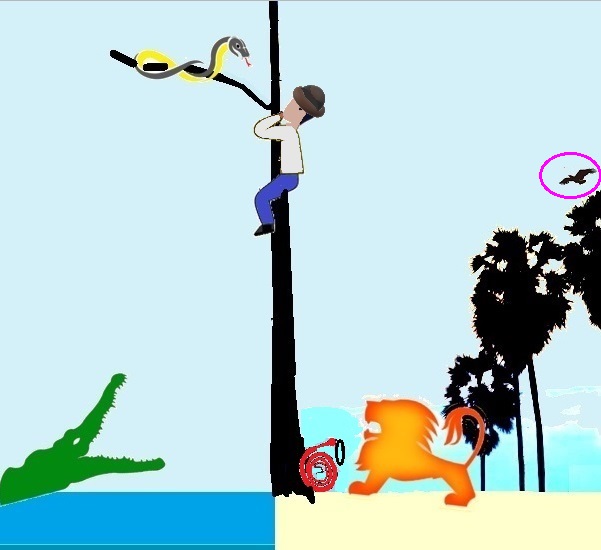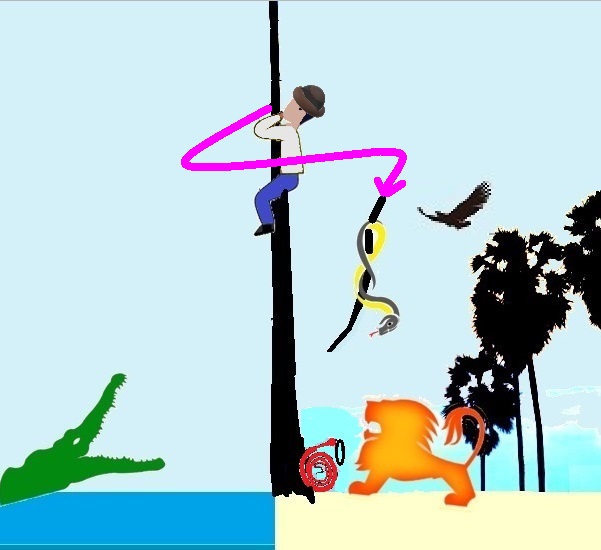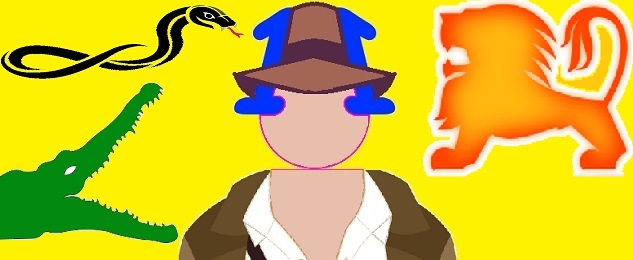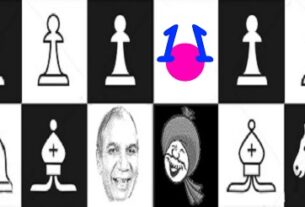Indiana Jones, Jr., also known simply as Indy, a fictional professor of archaeology, is the title character and protagonist of the Indiana Jones franchise created by George Lucas. Indiana Jones, played by Harrison Ford in the Indiana Jones film franchise, is one of the most iconic movie characters of all time. Indy is characterized by his iconic appearance (whip, fedora and leather jacket), witty and sarcastic sense of humour, deep knowledge of ancient civilizations and languages. Indy’s fear of snakes is one of his most iconic character traits. The franchise has shown this in some truly memorable scenes.
Now imagine the movie scene below. There is a hungry crocodile, a venomous snake and an angry lion. If Indy makes any moves on a fragile tree, then the snake will bite. If he jumps into the water, then the crocodile will devour him. If he jumps on the ground, then the lion will kill him. There is a whip near the tree.

Now what would you do if you were a movie writer and had to save Indy without outside help?
.
.
.
.
.
.
.
.
.
B
Y
T
E
–
M
A
N
.
.
.
.
.
.
.
.
.
.
This puzzle is a variant of a famous boy escape puzzle/African story available online.
One logical script
- Indy will wait till an eagle (see the circle part in the image) flies nearby.

- When an eagle comes closer, he will immediately break the fragile branch on which the snake is and throw it to the lion.

- The venomous snake will bite the lion.
- A nearby eagle will fetch the venomous snake from the ground before it climbs a tree again.
- Snake venom will eventually kill the lion.
- The hungry crocodile will focus on the dead lion.
- Indy will jump and take the whip (for possible self-defence) and run away.
( Extra lines: According to biologists, the term “venomous” is applied to organisms that bite (or sting) to inject their toxins (into the blood systems of other organisms), whereas the term “poisonous” applies to organisms that unload toxins when other organisms eat or bite them (affecting their digestion system). The vast majority of snake toxins are transferred by bite. Most dangerous snakes are technically venomous. In reality, most snakes are harmless and some are venomous. But, they are rarely truly poisonous. That means even the most dangerous species of snakes, being venomous only, can be digested by other animals. That’s why the dead body of a lion bitten by a venomous snake can’t be poisonous to a crocodile.
Secondly, crocodiles will rarely attempt to chase a human on dry land as they can’t run faster than humans in most cases. It is theoretically possible for a human to outrun a crocodile or alligator on land, but it would depend on the distance, terrain, and the individual’s speed and stamina. Crocodiles are capable of killing prey on land, but they typically prefer to ambush and catch their prey in water. They may drag their prey into the water to drown it or to protect it from other predators. Humans can be faster on land than crocodiles, but crocodiles are much faster in water.
Thirdly, one may write a script where Indy doesn’t make any movement and an eagle fetches a snake from the branch. After that, Indy breaks the fragile branch and pulls the whip from the ground safely. After that, he jumps on the ground and tries to tame or scare a lion using a whip. However, in terms of using a whip as a weapon against big cats, it would not be a wise choice. These animals are much stronger and more dangerous than humans, and a whip would not provide enough protection or defence in such an encounter. Animals can be trained to associate certain stimuli, such as the crack of a whip, with pain or discomfort. However, this does not necessarily mean that the animal is “scared” of the whip. Also, humans can’t outrun lions on the land. )



